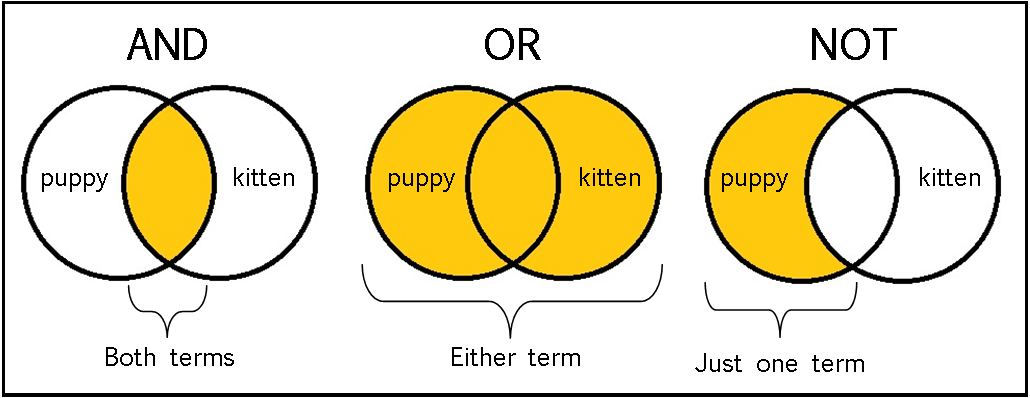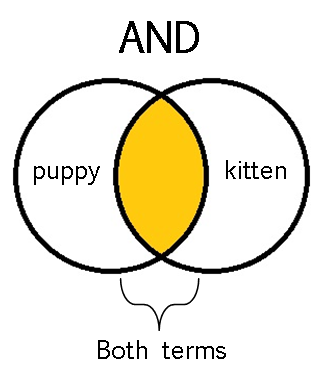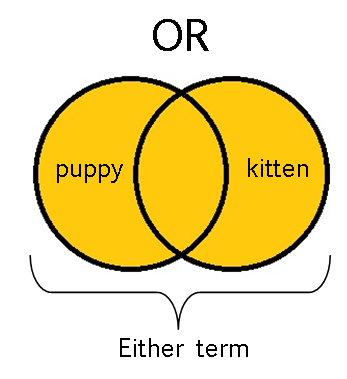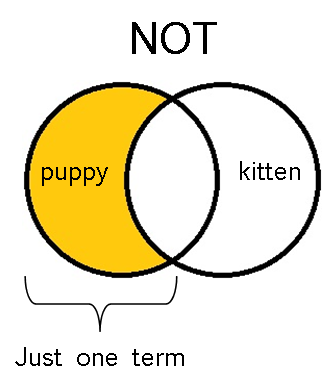Start With Your Keywords
Identifying the Main Concepts
We’ve done a lot of prep work so far, and we have just a bit more to do before we actually start searching for resources in a few more chapters. The last thing we need to add to our search plan is keywords, or the words we search that represent the main concepts of our research topic.
Though many people type full questions word-for-word into search tools, some of the words in your research topic are irrelevant when it comes to finding information sources. Including irrelevant words in your keywords can really mess with your results, you might not get a comprehensive view of what sources are out there or you could have too many irrelevant sources clouding your result list.
So how do you identify those main concepts? Well for starters let’s eliminate some easy words that will never be part of the main concept: the, of, a, to, is, affect, pro, con, impact, what, why, when, how, and are. All those words can go.
Next, look for nouns in your topic that would be essential if you were describing your topic to someone else. I call this part Hulkspeak, because you want to think of the most basic ways of referring to your topic with no frills or unnecessary words.
Let’s look at an example of how we eliminate unnecessary words then highlight the main concepts:
Research topic: How can divorce affect a student’s GPA in high school?
How can divorce affect a student’s GPA in high school?
Eliminating the unnecessary words first left us with only main concepts, that was easy! If you search divorce, student, GPA, and high school and all your results have all those words, you’ll find some really relevant sources.
Evolution of Keywords
Like most things with research, you should get comfortable with change. The main concepts you identify at the beginning of your research process will evolve as you search. You’ll take a look at your results and, if they aren’t good enough, you’ll need to edit your keywords and search again—often multiple times. Most of the time, the first keywords we try are not the best, even though our search tool gives us results. It pays to search further for the sources that will help you the most. Be picky.
My advice to you is to start your keywords as broad as possible, review your results, and then start making adjustments. It can be helpful as you search to start listing any alternative or related keywords or phrases that you might want to incorporate into your search. You could return to your presearch to see what terms and phrases were used. You could also try using a thesaurus to find synonyms. Some databases will also list “related terms,” which can be helpful for modifying your search. The better you know your topic, the better your keywords will be, so be prepared to do multiple searches before finding the “right” keywords.
Combining Keywords
OK, so now you’ve found the main concepts and listed several keywords to describe these concepts (e.g., synonyms, narrower terms, broader terms), it’s time to combine those keywords in meaningful ways in order to perform a search. Strategically combining terms will help you get more precise results than you otherwise would typing in a whole research question or just a few words into a search bar. Search statements are almost like a set of instructions given to whatever search tool you’re using.
We combine our keywords to create a search statement using AND, OR, NOT—always typed in all capital letters in order for the search tool to recognize them as combining words rather than a part of your keywords.
AND
AND is used between all the keywords and phrases that you want to include in your search. When creating a search statement to find information on the effects of divorce on high school students’ GPA, AND goes between all the keywords:
divorce AND grade point average AND high school
The instructions you’re giving to the search tool is to return results that contain all three of these keywords.
OR
OR is used to search for alternative keywords. Remember, there are many words that one could use to describe the same concept and OR gives you the option to search for multiple, synonymous terms at once. Instead of searching for various alternative keywords in different searches, OR allows you to search for multiple alternative keywords in the same search.
grade point average OR academic achievement
NOT
NOT excludes certain keywords from your search. This isn’t as commonly used as AND and OR, but NOT can be very helpful if you are getting many irrelevant results. NOT is best used when using keywords that have associations with multiple things. For instance, if you were trying to search for information on the animal Jaguar and kept getting too many results about the car brand Jaguar, you could use NOT to exclude the word “car” from your search.
Be aware that using NOT can exclude relevant results, as well. If an article or website that had some great information on the animal Jaguar, but just so happened to mention the word “car” in the text somewhere, it would be excluded from your results.
Activity






